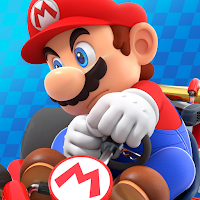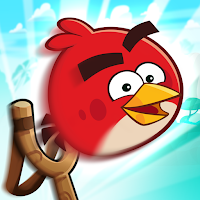












Minecraft
 Safety
Safety




Advertisement
Editor's Review
In the vast landscape of video gaming, few games have risen to the heights of cultural ubiquity like Mojang's masterpiece, "Minecraft." Launched in 2009 by creator Markus "Notch" Persson, Minecraft began as a humble indie game and swiftly evolved into a global phenomenon. By melding elements of survival, building, and exploration with an open-world sandbox environment, Minecraft has earned its place in the pantheon of legendary games. With a decade and counting under its belt, the game continues to capture the imagination of players both young and old.
At its core, Minecraft is a digital canvas. Players are thrown into a blocky, pixelated world made up of various materials like dirt, stone, wood, and more. With these materials, the possibilities are nearly limitless. One can construct simple homes, intricate architectural wonders, or even re-create real-world structures. The charm of the game emanates from its blend of simplicity and complexity. A player can spend just as much time cultivating a small garden as another could engineering a complex, automated farm.
Minecraft has various game modes, but Survival is perhaps the most iconic. Here, players must fend off nocturnal creatures like zombies, skeletons, and the infamous Creepers, all while managing hunger and resources. This aspect of the game introduces an exciting tension. By day, the world is a sandbox for creation; by night, it transforms into a realm of danger.
For those seeking more adventure, Minecraft’s world generation algorithm ensures that no two worlds are identical. This means endless opportunities for exploration. From dense forests and vast oceans to the eerie, otherworldly dimension of The End, there's always a new corner of the Minecraft universe to discover.
For players less interested in survival and more into unfettered creativity, there’s Creative mode. Here, players can fly, have access to unlimited resources, and aren’t bothered by monsters. This mode acts as a digital playground, perfect for honing building skills, testing out new construction ideas, or simply sculpting the landscape to one’s desires.
It's awe-inspiring to see what the community has created over the years: from scale models of the entire Earth to intricately detailed replicas of fantasy realms. The ability of Minecraft to unlock such creativity in its players is, without doubt, one of its strongest facets.
For the mechanically minded, Minecraft offers a unique component: Redstone. This material allows players to create functional circuits, bringing a layer of technical depth to the game. Through Redstone, players have crafted everything from simple door mechanisms to working calculators and even playable games within the Minecraft world itself.
Minecraft's significance is also bolstered by its vibrant community. Through mods, players have introduced new features, creatures, and even entirely different modes of gameplay. This community-driven aspect has kept the game fresh and continuously evolving. Moreover, Mojang has been receptive to player feedback, often incorporating popular mods and features into official updates.
To review Minecraft is to understand its impact on the broader culture of gaming and its influence on millions worldwide. The game transcends age barriers, attracting both children and adults alike with its blend of creativity, adventure, and sheer open-mindedness.
While some may criticize its graphics as rudimentary or its mechanics as repetitive, the enduring appeal of Minecraft is undeniable. Its charm lies not in ultra-realistic graphics or intricate storylines but in the power it places in the hands of the player – the power to create, explore, and make the game uniquely their own.
As Mojang continues to update and expand the Minecraft universe, one thing is certain: this blocky, pixelated world has left an indelible mark on the history of gaming. It’s not just a game; it’s a cultural phenomenon.
By Mina | Copyright © quizbubbleup - All Rights Reserved


Advertisement
























Comments